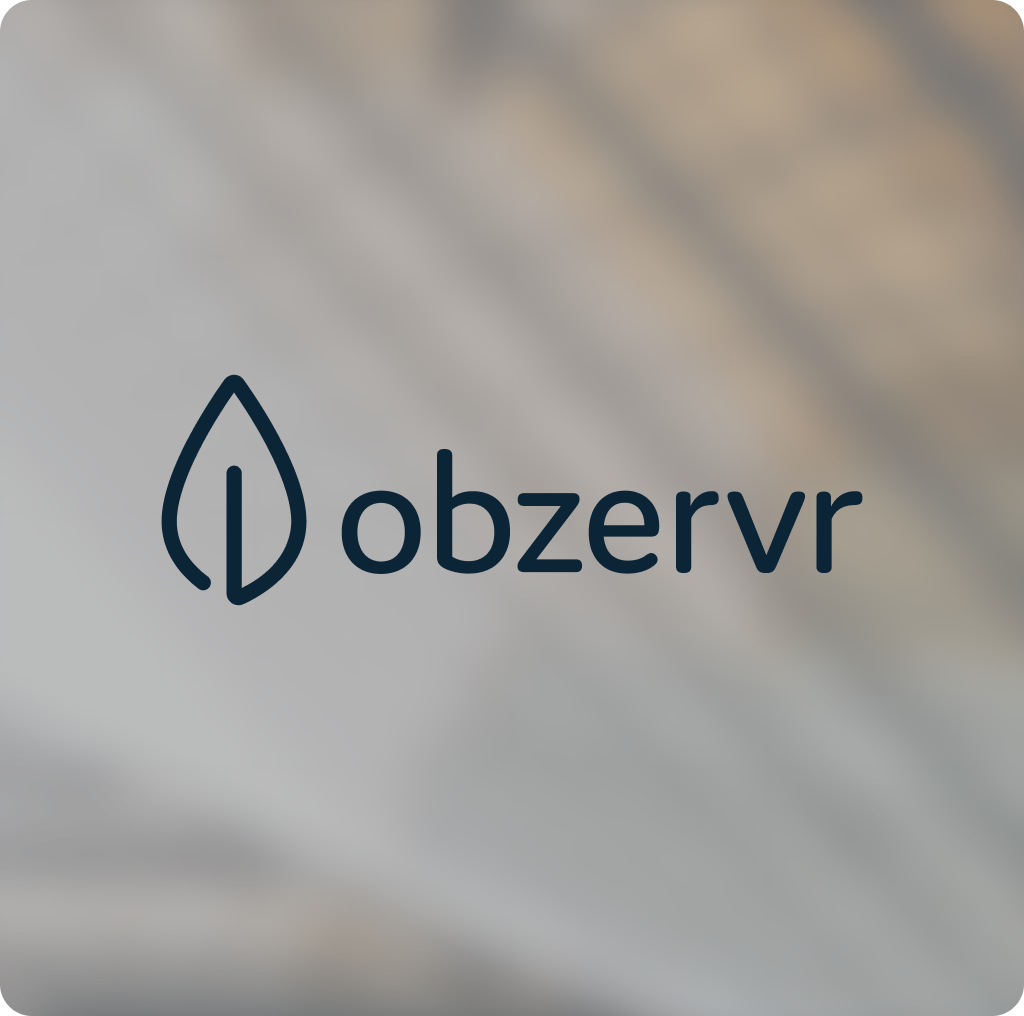Many organizations rely on an ever-growing stack of tools: CRM systems, ERP systems, cloud services, legacy systems, and more. Each solves a specific need, but the challenge lies in making these different systems communicate and share data.
As the number of such applications grows, ensuring consistent, reliable communication and data exchange becomes even harder. This is where integration middleware steps in as a key. Acting like an invisible software layer, middleware facilitates data flow between systems, enabling operational efficiency, scalability, and reliability without requiring fragile, hard-coded integration process.
In this guide, we’ll explore what middleware integration is, why it’s essential, the main types of middleware platforms, and how Getint’s integration platform makes it easier than ever to unify your tech stack.
Middleware as a Important Foundation for Modern Organizations
Middleware isn’t new. In fact, concepts like enterprise application integration (EAI) have been around for decades. But today, middleware integration is more relevant than ever. As organizations shift toward microservices, API-driven design (leveraging application programming interfaces), and hybrid cloud infrastructure, the number of disconnected systems grows rapidly. Integration middleware addresses this rising complexity by offering a central integration layer that standardizes how different systems communicate and share data.
Without a middleware layer, businesses often fall into the trap of creating time-consuming integrations, connecting System A directly to System B with scripts or plugins. This custom integrations approach may work in the early stages, but it quickly becomes brittle and unmanageable as you add more tools. With each new application, the web of direct connections grows exponentially. A change in one system can inadvertently break integrations with three others. Teams struggle to trace issues, update custom code, or ensure data consistency across the board.
Integration middleware, on the other hand, promotes a hub-and-spoke model: each tool connects to the middleware integration platform, not directly to each other. The middleware manages the flow of data - transforming data formats, enforcing business rules, routing messages, and handling exceptions. It becomes kind of the intelligent broker for how data moves between systems, not just a passive point-to-point pipe. This layered approach significantly lower integration costs and reduces integration complexity, while improving resilience.
Different Types of Middleware Platforms
Not all middleware is created equal. While the core concept remains the same (acting as a broker between systems), middleware comes in various forms to suit different needs. Below we describe the main categories of middleware platforms used today, from traditional middleware integration solutions to modern cloud-based services.
1. Enterprise Service Bus (ESB)
Enterprise Service Bus (ESB) – the traditional heavyweight integration platform – is a centralized hub designed to coordinate communication across a large number of enterprise applications. ESBs excel at handling high-volume, mission-critical transaction processing and are typically deployed in large-scale corporate environments.
As a middleware platform, an ESB provides:
- Centralized routing and data transformation: all messages pass through the bus, which can route data to the correct destination and transform data formats as needed.
- Strict governance, security, and compliance frameworks: ESBs often include robust management consoles for setting policies, role-based access control, and monitoring activity.
- Support for legacy protocols and on-premises systems: an ESB can speak older or complex protocols (SOAP web services, FTP file transfers, EDI transactions, etc.) to integrate with legacy or on premises systems that a newer tool might not directly support.
However, ESBs can be complex to manage and slow to adapt. They often require specialized expertise and significant overhead. In fast-moving teams or mid-size companies, a full ESB can be overkill – it may introduce more complexity and cost than necessary for simpler integration needs. Traditional middleware platforms like ESBs formed the backbone of integration in the past, but newer approaches have emerged for greater agility.
2. iPaaS (Integration Platform as a Service)
Integration as a Service has emerged as the modern, cloud-native answer to the ESB. It's a cloud-based solution that provides middleware capabilities (connectors, data transformation, workflow automation, etc.) through a user-friendly platform, often with low-code or no-code interfaces. This makes integration accessible not only to developers but also to operations, support, and business teams.
For many scenarios, an iPaaS strikes a great balance by providing an integration middleware solution with significantly lower upfront integration effort.
Typical use cases for iPaaS include:
- Connecting cloud apps (e.g. data integration between Salesforce, HubSpot, Zendesk, Jira, Slack, etc.).
- Synchronizing customer or product data between departments to eliminate duplicates and data silos.
- Automating cross-functional workflows without heavy engineering involvement (for example, when a sale closes in a CRM, automatically create tasks in a project management tool and notify finance).
iPaaS solutions are usually more agile and quicker to implement than ESBs. They often come with pre-built connectors and a visual interface for mapping fields and building workflows like it goes with solutions like Getint that bring the best of iPaaS to modern organizations, by combining agility with reliability and reducing the need for traditional middleware solutions.
3. Event-Driven Middleware
In increasingly decoupled, distributed architectures, event-driven middleware has gained traction. These systems use message queues and publish-subscribe brokers to react to changes in real time. In essence, this category is often built on message-oriented middleware (MOM) technologies that facilitate asynchronous communication and data streaming of events.
Event-driven integration is particularly useful when:
- Systems don’t need to respond immediately to each action, but should eventually become consistent (eventual consistency).
- You want to decouple producers and consumers for scalability – the operating system emitting data doesn’t need to know who receives it.
- Events, rather than direct API calls, are the primary triggers in your architecture (e.g. a “new order placed” event that multiple downstream systems listen for).
Common tools in this space include Apache Kafka, RabbitMQ, AWS SNS/SQS, or NATS, which act as the backbone for event streams and queues. This approach enables real-time processing and can scale to handle large volumes of events. Event-driven middleware is incredibly powerful for building reactive, scalable systems, but it also introduces complexity around message durability, ordering guarantees, error handling, and replay/retry logic. It’s ideal for advanced engineering teams that can invest in DevOps and monitoring for the messaging infrastructure, and it requires a clear integration strategy to manage the flow of events.
Note that there are other forms of middleware as well. Historically, enterprises used technologies like object request brokers (ORBs), to enable remote procedure calls in distributed systems and transaction processing monitors, to ensure smoothness in complex financial systems. These older software components laid the groundwork for enterprise integration, though today they are often wrapped into the categories above or replaced by modern platforms. The key takeaway is that whether it’s an ESB, iPaaS, or an event-driven broker, the goal of middleware remains the same: to facilitate communication between different software systems in a structured way.
What Integration Middleware Actually Does
To understand the value of integration middleware, it helps to look under the hood at the core functions it performs. While middleware operates behind the scenes, its job is highly complex and essential for stable operations. Here are some of the critical things an integration middleware handles:
- Data transformation
Converts information formats (XML, JSON, CSV) so systems can exchange data reliably.
- Workflow orchestration
Automates complex business processes across multiple systems.
- Error handling
Retries failed operations and ensures smooth transaction processing.
- Routing and decision logic
Directs data based on predefined business rules.
- Security
Enforces encryption, logging, and data protection regulations.
Together, these capabilities make integration middleware more than just a connector - it’s a foundation for a smarter, more reliable IT ecosystem.
Why Middleware Beats Point-to-Point Integration
When companies start integrating tools, they often use the most direct path: connect System A to System B using custom scripts or native connectors. This works, until it doesn’t.
With each new tool added to the ecosystem, the number of direct integrations increases exponentially. Updating one system risks breaking connections to three others. Teams struggle to trace issues, manage updates, or ensure data consistency.
Integration middleware solves this by introducing a single layer of abstraction. Instead of building direct connections between each pair of systems, you connect each tool to the middleware, which handles:
- Format translations
- Business rules
- Failure recovery
- Version control
- Centralized observability
The result? A far more scalable and maintainable system that supports growth without becoming fragile or chaotic.
Understanding the Architecture of Integration Middleware
Behind every well-integrated systems lies a deliberate architecture, one that ensures systems stay decoupled but work together seamlessly. Integration middleware provides this architectural backbone. It’s more than just a communication bridge for data exchange; it’s a software framework that orchestrates, transforms, and safeguards every interaction between tools.
Rather than connecting each system directly to every other system, middleware promotes a hub-and-spoke architecture, where each application connects to a central integration hub. This architectural model simplifies the complexity that would otherwise spiral out of control in a point-to-point setup.
At the heart of a modern middleware platform, you’ll often find several foundational components:
- Connectors (or adapters) - interfaces that know how to communicate with specific systems, like Jira, Salesforce, or SQL databases - handling authentication, rate limits, and API quirks.
- Transformation engine - converts data formats and maps fields so that systems can understand each other. This allows consistency across platforms even when their schemas differ.
- Orchestration layer - coordinates multi-step workflows. It defines logic such as “when this happens in System A, trigger actions in System B and notify System C.”
- Routing and decision engine - applies rules that determine where data goes and how it behaves in transit, based on context, metadata, or business rules.
- Monitoring and error handling: Tracks every transaction, logs performance metrics, flags anomalies, and supports retries or escalation paths for failures.
Together, these components form the middleware layer that underpins reliable application integrations, especially in fast-changing environments where tools evolve and data flows constantly shift.
Real-World Use Cases: Where Middleware Delivers the Most Value
Let’s look at some common use cases where middleware brings tangible, ongoing value.
1. Customer support and engineering alignment
One of the most widespread problems in growing companies is misalignment between support and development. A ticket raised in a helpdesk platform like Zendesk often needs to become a task in Jira or Azure DevOps, but that’s not a simple copy-paste job.
Middleware automatically syncs issues across platforms, ensuring the right fields are mapped, comments are transferred, and statuses are updated on both ends. The result: support agents stay in their system, engineers stay in theirs, and collaboration doesn’t require constant back-and-forth.
2. Cross-departmental data consistency
Sales, product, and marketing teams often use different tools (e.g. marketing automation platforms) and CRMs. Middleware ensures customer data integrity: account IDs, deal stages, onboarding progress - all of them remain consistent and synchronized across all platforms. That means fewer data silos and more unified insights across resource management.
3. Hybrid and legacy system integration
Many enterprises are caught between legacy on-prem systems and modern cloud platforms. Middleware acts as the translator between old and new, handling data management, for example, an on-prem SQL Server and a cloud-based CRM, without disrupting existing workflows.
4. Supply chain management
A global retailer relies on inventory management systems, supply chain management systems, and shipping/logistics applications to manage thousands of products. Without integration, these different supply and inventory systems lead to significant delays in communication.
By using an integration middleware option, the company connects all tools into a unified platform. Inventory updates flow instantly to the ERP system and CRM system, while vendor management systems share purchase orders automatically with suppliers. Shipping and logistics applications provide real-time delivery updates, ensuring smooth transaction processing and compliance with data protection regulations.
5. Healthcare data integration
A large hospital network uses electronic health records (EHRs), lab systems, and imaging systems for patient care. Without a central integration layer, doctors face delays accessing test results or medical images, and critical updates can be missed.
By implementing an integration middleware solution, the hospital creates a unified platform, integrating patients data seamlessly:
- Lab results stream into the EHR system in real time using secure data streaming.
- Imaging systems automatically attach X-rays and MRIs to the correct patient record.
- Middleware enforces data protection rules, ensuring sensitive health information is shared securely.
This reduces errors, improves operational efficiency, and gives care providers immediate access to complete patient information, leading to faster diagnoses and better outcomes.
6. Banking
A major bank runs legacy core systems alongside enterprise portal servers and web servers for online banking. Without integration, transaction handling is slow and inconsistent.
Using an integration middleware solution, the bank achieves a platform where:
- Middleware enables banks to process payments instantly and sync balances across all channels.
- Portal servers and web servers display real-time, compliant data for customers.
The result is secure, efficient service and a seamless customer experience.
Choosing the Right Middleware Strategy
Selecting middleware isn’t just about ticking boxes on a feature list - it’s about aligning your choice with the nature of your stack, your team’s skill level, and your long-term goals. The wrong choice can become technical debt. The right one becomes an enabler of scale.
Here are five key strategic lenses to evaluate middleware through:
- Modularity - can components be added, replaced, or reconfigured without overhauling everything? Middleware should be built for change.
- Accessibility - is the interface usable for technical and semi-technical users? Teams shouldn’t need to write custom code for basic tasks.
- Observability - can you trace every data flow and pinpoint where something broke? A middleware black box is a recipe for blind debugging.
- Security - does the platform provide access controls, data encryption, and auditing? Middleware must enforce - not bypass - your security posture.
- Stack compatibility - does it work well with both your modern SaaS tools and legacy systems? A platform that only handles REST APIs might not be enough.
Getint: A Modern Integration Middleware Solution
As we mentioned before, at Getint, we’ve built an integration platform that embodies the best of iPaaS, tailored for teams that need power without complexity.
Getint connects multiple applications like Jira, ServiceNow, Azure DevOps, Asana, and others by using service accounts and API tokens to authenticate and facilitate communication. The platform handles the transfer of data, such as tasks, comments, attachments, and custom fields, ensuring that information flows smoothly between otherwise independent systems. This middleware approach allows organizations to automate workflows, synchronize data, and maintain consistency across tools without manual intervention.
Moreover, security and compliance are foundational to the platform. Getint is certified under ISO 27001/27018, SOC 2 Type II, and fully GDPR-compliant, offering encryption, detailed audit trails, and strict access controls. Whether deployed as a cloud SaaS solution, native Jira app, or fully on-premise installation, it supports even the most compliance-sensitive environments.
Key points about Getint as middleware:
- It requires service accounts with appropriate permissions in each connected app.
- Authentication is handled via passwords or API tokens, depending on the application.
- Getint mediates all actions, so changes in one system can be reflected in another.
- The platform supports both one-way and two-way data synchronization, as well as advanced field mapping and filtering.
For more details on how Getint works as integration platform as a service and how to set up tool connections, see our guide on connection and filtering items for integration in Getint, or check out case studies on know how Getint integration app helped many organizations streamline their workflows.

When Middleware Is and Isn’t the Right Solution
Integration middleware isn’t a silver bullet. Like any architectural decision, it requires a tradeoff between flexibility, complexity, and control. Here’s a quick lens to help assess whether middleware is the right move:
Middleware makes sense when:
- You have 2+ systems that need to communicate in structured ways
- Data needs to move bi-directionally, not just pushed or pulled
- Workflows span departments or tools and require orchestration
- You need long-term maintainability and visibility into integrations
Middleware may be overkill if:
- You only need to sync two tools for a short-term need
- A native connector already does exactly what you need
- The integration is one-time (e.g., a data migration)
- You don’t need error handling, retries, or transformation logic
In many cases, teams start small, perhaps with a point-to-point sync, and eventually realize the value of middleware when things grow harder to manage. Middleware shines not because it's the fastest way to connect two tools, but because it's the most resilient way to scale your integration strategy.
Final Thoughts
Integration middleware is the connective tissue of modern software architecture. It turns disparate systems into coordinated ecosystems, helping businesses work faster, smarter, and more collaboratively. It’s not just about “moving data” - it’s about enforcing structure, preserving quality, and enabling visibility across teams and platforms.
At Getint, we see integration not as a backend afterthought, but as a core pillar of digital operations. We’ve built a platform that embodies the best parts of modern middleware: flexibility, scalability, visibility, without the bloat of traditional tools. For organizations struggling to keep their systems in sync, middleware might just be the most important tool they don’t know they need, yet.

























